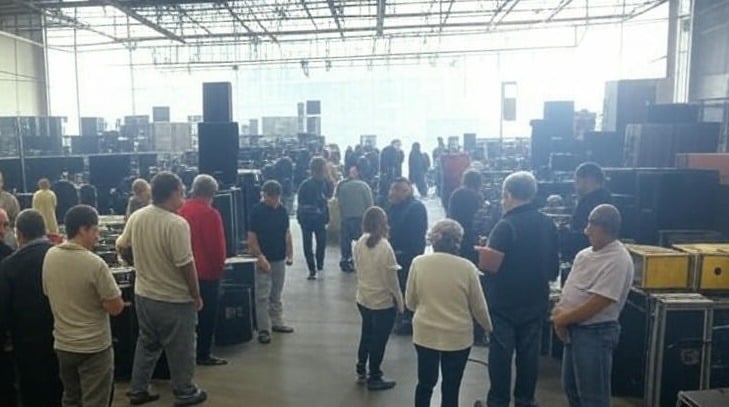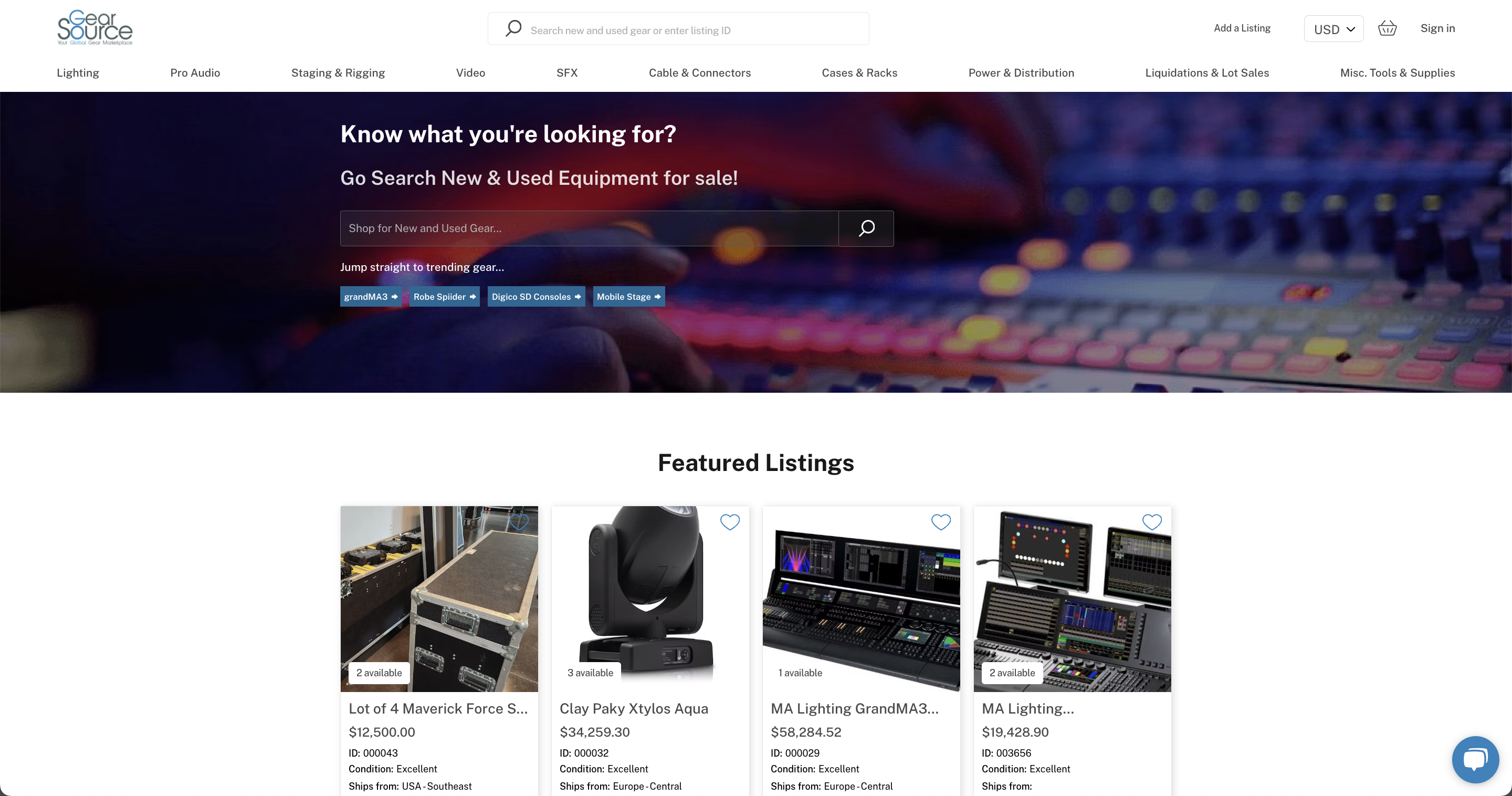Auctions Disrupt your Business - Chasing The Bottom on Pricing

Alternative Strategies for Inventory Life Cycling
For years now, Live Event production and rental companies have tried to offload surplus gear through auctions. And sometimes, they seem like the go-to solution, promising a quick influx of cash, sometimes in just a few days, and a chance to clear out inventory in one fell swoop. It’s an appealing pitch: fast money, minimal hassle, and fees are often well hidden! But dig a little deeper, and the cracks appear. Auctions might deliver speed (at least on the best items you're offering), but come with hidden costs—both financial and operational—that can outweigh the benefits. We believe there’s a smarter, less disruptive way to manage your inventory disposal and upgrades. Let’s break it down.
The Hidden Downsides of Auctions
- Disruption Overload
Auctions sound simple until you factor in logistics. To make them work, you’re shifting inventory around your shop—or worse, shipping it across the country or even the globe—to a central auction site. That’s not just a logistical headache; it’s a full-blown disruption to your day-to-day operations. Staff pulled from their regular duties, workflows stall, and your focus shifts from serving customers to wrangling gear. For businesses built on efficiency and reliability, that’s a steep price to pay. Not to mention the physical mess it creates in your shop(s). - Pricing That Punishes Your Best Gear
Auctions thrive on one thing: driving prices down. Buyers show up for bargains, not fair market value. And yes, usually the bargains are on your loss leaders. Those few gems you’ve used to lure them in with hopes of selling the “other” stuff. While it might clear your inventory fast, you’re leaving money on the table. Your high-quality, well-maintained gear that you’ve invested in for your best customers—gets undervalued in a race to the bottom. That’s not just a financial hit; it’s a blow to the reputation you’ve worked hard to build. And oh, wait until you try to increase the price for “regular” sales. - Fees That Sting
Auction houses often tout low upfront costs, but the fine print tells a different story. Once the hammer falls, seller fees, buyer premiums, and other charges pile up—often eating into your profits far more than you’d pay with a specialized, vertical marketplace like GearSource. What looked like a quick payday shrinks fast when the bill comes due. - Creating or Supporting Local Competitors
Auctions generally drive uber-local or near region business only. In other words, you’re selling your gear, at below-market prices, to often smaller, up and coming competitors. Yes, that can also happen on a marketplace platform, but the law of averages prevails. Most times, you’re selling outside your local markets, and even to a different country! - Buyer Beware—and Seller Too
From the buyer’s perspective, auctions are a gamble. Sales are typically final, with no warranties or recourse if the gear turns out to be a dud. That’s bad for them, but it’s also bad for you. When buyers feel burned, they’re less likely to trust your brand in the future. Contrast that with a marketplace like GearSource, where we step in to help mediate disputes and ensure fair dealings. It’s a system that builds trust, not resentment.
A Better Approach: The Master Disposal Strategy
Auctions are like a spring cleaning for your inventory—drastic, occasional, and chaotic. But just as you wouldn’t let your house fall into disarray all year only to tidy up in April, you shouldn’t treat your asset base like a once-a-year fire sale. Instead, imagine a consistent, strategic approach that maximizes returns, minimizes disruption, and keeps your operation humming all year round with the latest technologies. Focus on a strategy to consistently upgrade your gear—while always maintaining a disposal model inline with your life cycling plans. One highly successful model is to upgrade gear at 2 years whether it makes sense or not. This ensures you’re always cycling, maintaining freshness for your customers, and maximizing depreciation cycles, financing, etc.
Here’s what that looks like:
- Value Retention First
GearSource becomes a partner, working with you to ensure you’re getting the best value for your assets. You’re not forced into a bargain-basement pricing model like with auctions. You set prices that reflect the quality and care you’ve put into your gear, and based on actual sales data offered, ultimately retaining its value and reinforcing your brand’s commitment to excellence. - Less Disruption, More Control
No need to shut down your shop or ship everything to an auction site. A master strategy lets you sell off inventory gradually, on your terms, without derailing your team or your customers. It’s disposal that fits into your workflow, not the other way around. And the GearSource team offers support with logistics, even globally! - A Message That Resonates
Your customers notice how you manage your inventory. A consistent upgrade strategy—powered by a marketplace, not an auction—sends a clear signal: “We’re always evolving, always maintaining the best gear, and always ready to serve you.” That’s a far cry from the “everything must go” vibe of an auction. Seriously, auctions have always looked bad on the business selling. Its like a yard sale… in a nice neighborhood. Precisely why sights like Ebay and Offerup exist! - Support That Auctions Can’t Match
At GearSource, we’re not just a platform—we’re a partner. We offer tools, insights, and mediation to ensure every transaction works for both buyer and seller. It’s a level of care auction houses simply don’t provide. And much more is coming in 2025, including clear indications on what you should buy or sell, and when.
Evolve, Don’t Overhaul
The truth is, your rental inventory isn’t just a collection of assets—it’s the backbone of your business and part of your DNA. Treating it like a pile to be dumped at the next auction undervalues its role in your success. A master lifecycling plan including disposal and upgrade strategies, built around a partnership with GearSource, keeps your asset base evolving in sync with your goals. It’s less about quick fixes and more about long-term gains—financially, operationally, and reputationally.
So, next time you’re tempted by the siren call of an auction, take a step back. Consider the disruption, the pricing pitfalls, the fees, and the message you’re sending. Then ask yourself: Isn’t there a better way? At GearSource, we think there is—and we’re here to help you make it happen.

